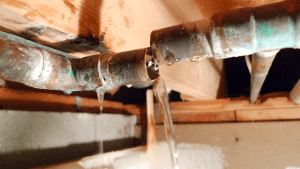Six Ways to Identify Hidden Water Line Leaks Successfully
Six Ways to Identify Hidden Water Line Leaks Successfully
Blog Article
The article author is making several great pointers on Finding hidden leaks in general in this content which follows.

Early discovery of dripping water lines can reduce a possible catastrophe. Some little water leakages might not be visible.
1. Check Out the Water Meter
Every house has a water meter. Checking it is a guaranteed way that assists you find leaks. For starters, switch off all the water resources. Ensure no person will flush, make use of the tap, shower, run the cleaning maker or dish washer. From there, most likely to the meter as well as watch if it will alter. Because no one is utilizing it, there ought to be no movements. That shows a fast-moving leakage if it relocates. Likewise, if you discover no changes, wait a hr or 2 as well as examine back again. This suggests you may have a slow-moving leakage that can also be below ground.
2. Check Water Consumption
Evaluate your water expenses and also track your water intake. As the one paying it, you ought to discover if there are any inconsistencies. If you identify sudden changes, in spite of your usage coinciding, it indicates that you have leaks in your plumbing system. Keep in mind, your water expense ought to fall under the very same array on a monthly basis. An abrupt spike in your expense indicates a fast-moving leakage.
A stable increase every month, also with the exact same practices, reveals you have a sluggish leakage that's likewise gradually intensifying. Call a plumber to thoroughly examine your property, specifically if you really feel a cozy location on your floor with piping beneath.
3. Do a Food Coloring Test
When it comes to water intake, 30% comes from bathrooms. If the color somehow infiltrates your dish during that time without flushing, there's a leak in between the storage tank and also bowl.
4. Asses Exterior Lines
Do not forget to inspect your outside water lines as well. Must water permeate out of the connection, you have a loose rubber gasket. One little leak can lose tons of water and increase your water expense.
5. Inspect and also Evaluate the Scenario
House owners need to make it a habit to inspect under the sink counters and also also inside closets for any kind of bad odor or mold growth. These two red flags suggest a leakage so prompt interest is called for. Doing regular assessments, even bi-annually, can save you from a significant problem.
Inspect for discolorations and also deteriorating as the majority of devices as well as pipes have a life span. If you think leaking water lines in your plumbing system, do not wait for it to rise.
Early detection of leaking water lines can mitigate a possible catastrophe. Some tiny water leakages may not be noticeable. Checking it is a proven method that aids you discover leaks. One little leakage can waste tons of water and increase your water expense.
If you presume leaking water lines in your plumbing system, do not wait for it to escalate.
WARNING SIGNS OF WATER LEAKAGE BEHIND THE WALL
PERSISTENT MUSTY ODORS
As water slowly drips from a leaky pipe inside the wall, flooring and sheetrock stay damp and develop an odor similar to wet cardboard. It generates a musty smell that can help you find hidden leaks.
MOLD IN UNUSUAL AREAS
Mold usually grows in wet areas like kitchens, baths and laundry rooms. If you spot the stuff on walls or baseboards in other rooms of the house, it’s a good indicator of undetected water leaks.
STAINS THAT GROW
When mold thrives around a leaky pipe, it sometimes takes hold on the inside surface of the affected wall. A growing stain on otherwise clean sheetrock is often your sign of a hidden plumbing problem.
PEELING OR BUBBLING WALLPAPER / PAINT
This clue is easy to miss in rooms that don’t get much use. When you see wallpaper separating along seams or paint bubbling or flaking off the wall, blame sheetrock that stays wet because of an undetected leak.
BUCKLED CEILINGS AND STAINED FLOORS
If ceilings or floors in bathrooms, kitchens or laundry areas develop structural problems, don’t rule out constant damp inside the walls. Wet sheetrock can affect adjacent framing, flooring and ceilings.
https://www.servicemasterbyzaba.com/blog/how-to-detect-water-leakage-in-walls/

Hopefully you enjoyed reading our section on Hacks to detect leaks. Thanks a lot for taking the time to read our post. Sharing is good. Helping people is fun. Kudos for your time. Kindly check our blog back soon.
Schedule Today Report this page